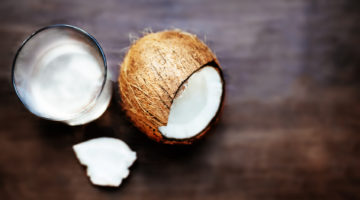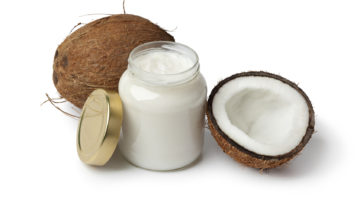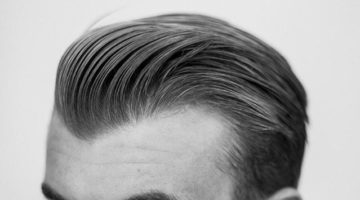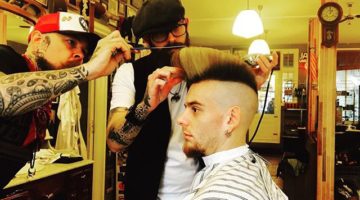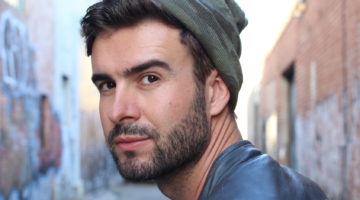In the past year, it seems like Hollywood has gone buck wild with hair bleach. Jared Leto famously went green for his Joker role (and then pink, and then platinum), Kanye debuted a rainbow sherbet, and Orlando Bloom went flaxen. Even soccer star Lionel Messi got in on the action.
Bleached hair is certainly a way to take your grooming game to the next level. But this fashion statement comes at a cost: when you bleach your hair, hydrogen peroxide opens hair cuticles to remove melanin (color). Your cuticles then stay open, so the cortex of your hair is exposed with nothing to protect it. This leads to split ends and breakage.
If you’re thinking about going blond, it’s important to know how to protect your hair before, during, and after the bleaching process. If you treat your hair right and use the right products, you can minimize damage and rock an Insta-worthy head of hair. Here’s what you need to know about bleaching your hair safely.
Come to the salon with dirty, oily hair
In the routine of washing your hair nightly? Don’t do so the night before your dye job. The natural oils in your hair protect it from damage during chemical processing. Plus, shampooing can irritate your scalp. Best-case scenario: don’t shampoo at all for a few days before your dye job. Should your hair already be chemically processed, use a deep conditioner the week before for an extra buffer. We like DR Harris Conditioner – Coconut Oil.
If you have to wash your hair the night before for some reason (like you just had an extra sweaty Crossfit session), coat your hair with coconut oil after shampooing and leave it on overnight to minimize damage the next day.
Listen to your colorist
We don’t recommend bleaching your hair at home unless you already have very blond hair. Colorists are specialists for a reason, and they can evaluate your hair to tell you if it’s healthy enough to be bleached, and what it’ll take to get you to blond. There’s no skirting around the fact that bleach will damage your hair, but it’s especially hard on your hair if it’s already chemically processed or color treated. Your colorist will know how to handle your specific situation.
Confess any previous hair treatments to your colorist – including toner, gloss, and semi-permanent dyes. Any color in the hair affects the bleaching procedure and time.
Know what to expect, and how long it’ll take
Don’t bring in a picture of your favorite celebrity and ask for his exact color. Bleach affects everyone’s hair differently. The hair color you start with as well as the condition of your hair determine your results.
If you’re starting off with ash blond, it’ll take you less time to go platinum than someone with black hair. In fact, if you have black hair, you should expect a few salon visits to get to the hair color you want. If you’re in for a double-process, pencil in a full day at the hair salon. We recommend bringing snacks and lots of reading material.
Try not to do your roots
Bleach wreaks havoc on hair and scalp, and you can actually get chemical burns on your scalp! Minimize damage by keeping it away from your scalp. Thankfully, dark roots are pretty popular right now, so your choice to not bleach your roots will not only be smart, but also fashionable. Dark roots can provide an interesting contrast to overall color.
Choose a platinum that works for you
There are many different types of platinum: a golden one can enhance your skin tone, while an ashy one can create a sleek shadow at the root. Your colorist will evaluate the best tone for your complexion.
Ask for Olaplex
Olaplex is a salon treatment that protects and rebuilds damaged hair – during and after the dye job. It’s a great tool to have on your side when you’re putting your hair through the wringer.
Care for damaged hair
After you bleach your hair, it’s changed forever. So you can’t treat your hair the same way you did when it was stronger and healthier. That means using products designed for bleached hair, such as a purple or silver shampoo and conditioner that will neutralize brassiness. And rather than shampoo daily, try limiting shampoo to 2 times a week.
After you’re done showering, pat – don’t rub – hair dry, and run through strands with a wide tooth comb. This will cut down on breakage.
Lay off of heat styling whenever possible, since it will only dry your hair out more. But we understand that pomp won’t make itself. If you have to heat style, set your blow dryer on the cool setting.
And if you’re typically a pomade guy, consider switching to something lighter, since many pastes, clays, and gels are drying. JS Sloane High Gloss Top Coat contains argan oil for moisture retention, and offers great shine for any hairstyle.
For a comprehensive breakdown of how you should care for your chemically processed hair, check out our posts on the topic here: Part 1 and Part 2.
Go for a shorter cut
Longer, bleached hair is more likely to break than shorter hair, so consider shorter cuts like the low fade or the Caesar. Don’t forget to get regular trims to reduce split ends.

